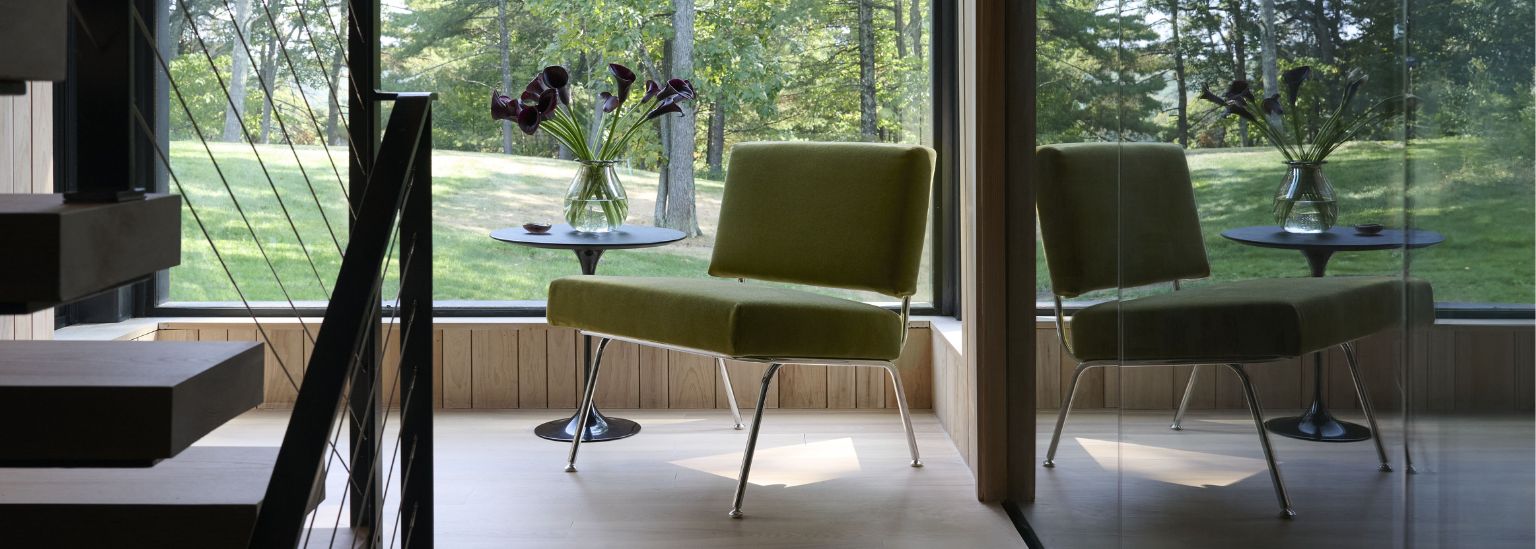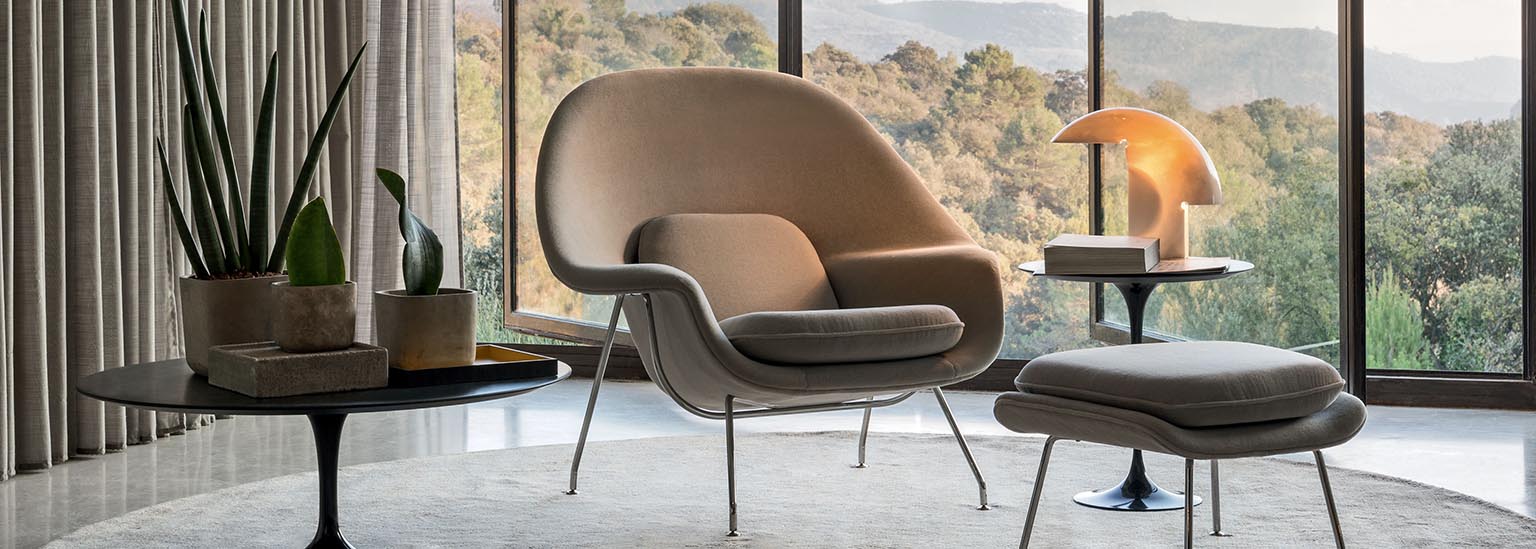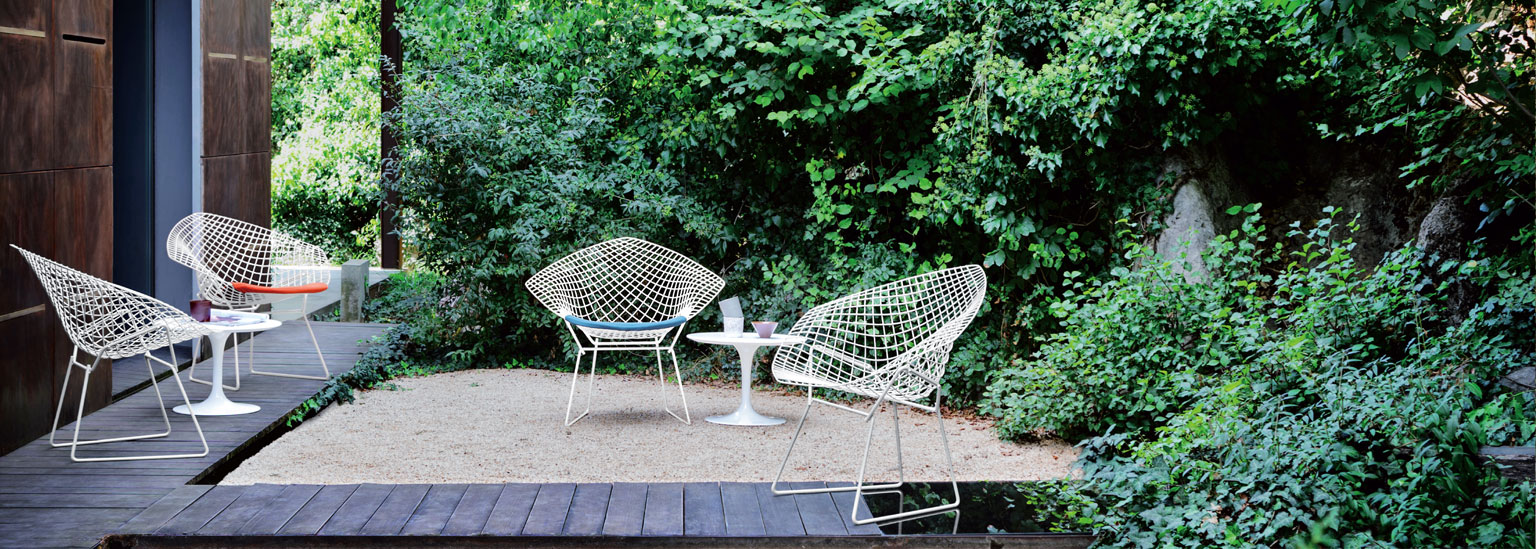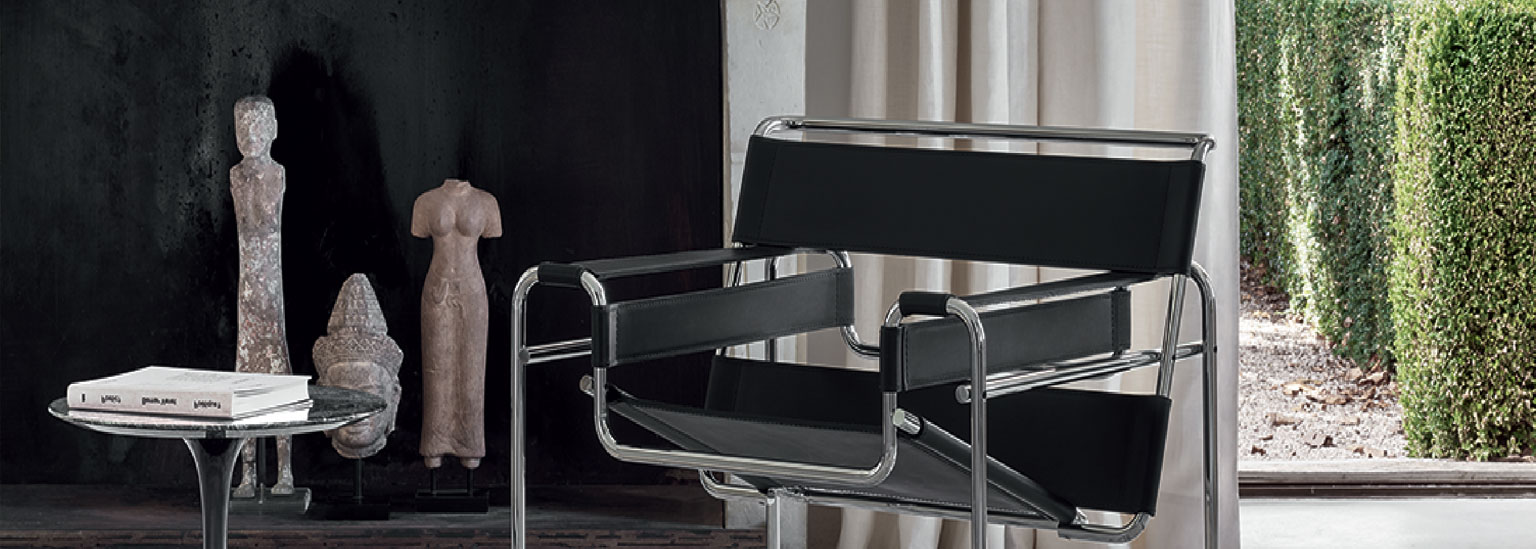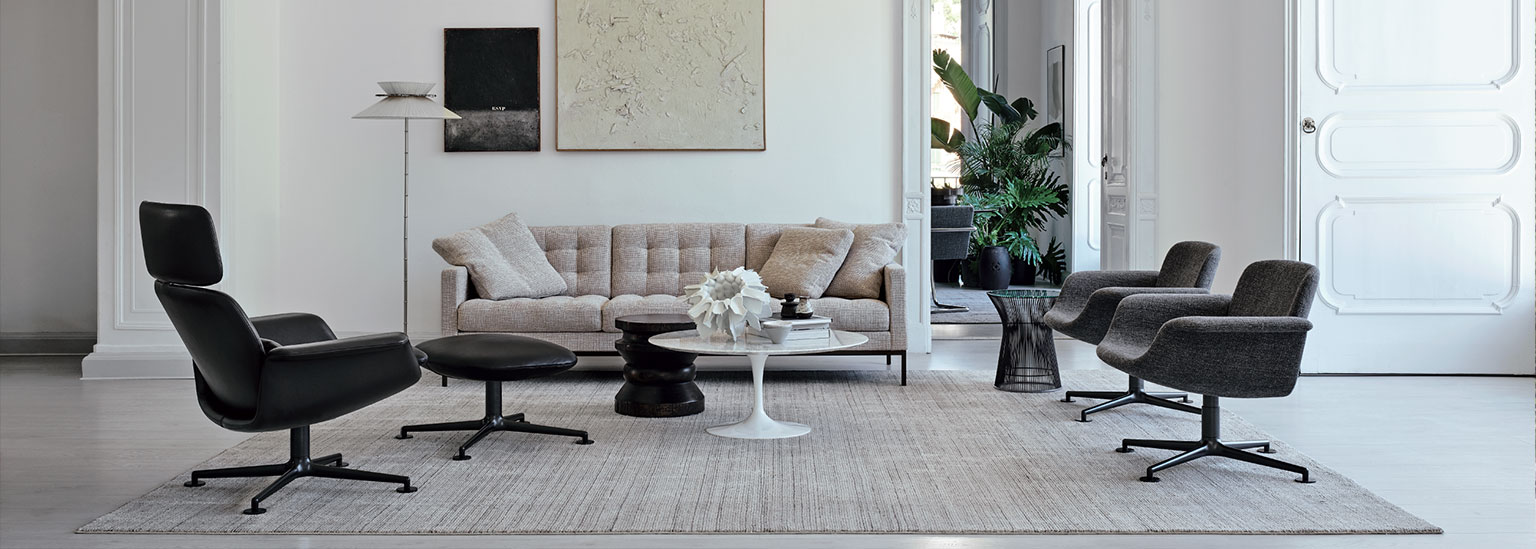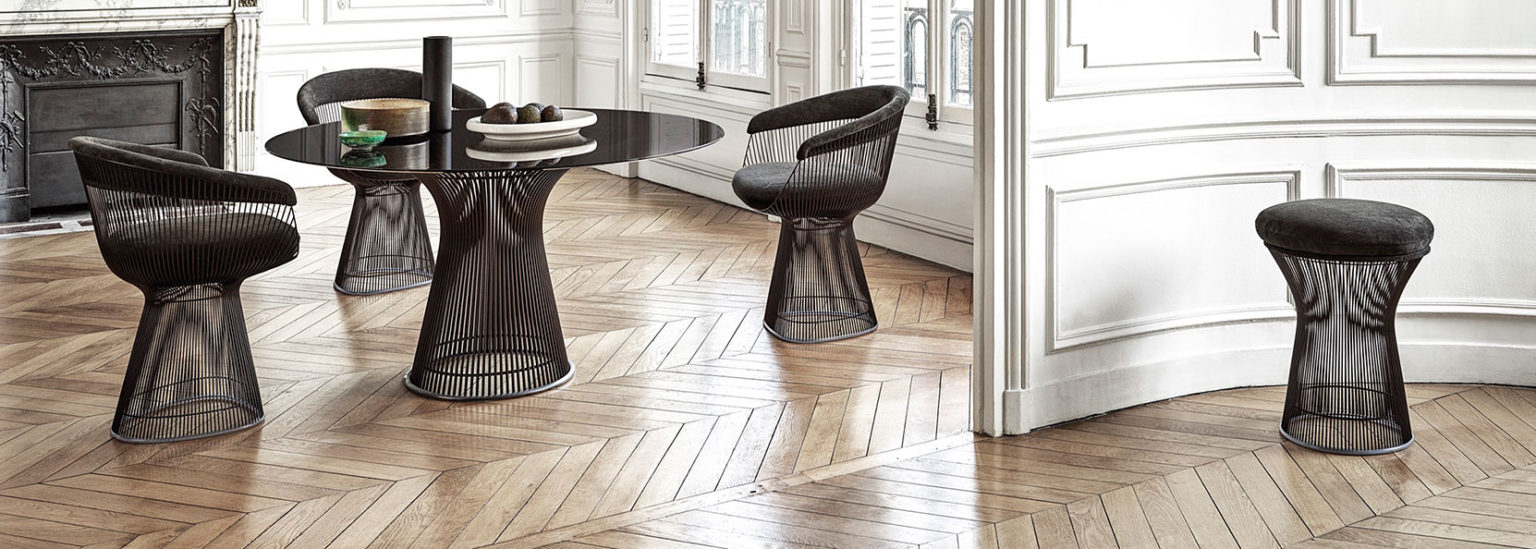Florence Knoll™
Model 31 and Model 33
Announcing the return of the Florence Knoll™ Model 31 Lounge Chair and Model 33 Sofa, two classic designs that speak in a contemporary voice. With their tubular steel bases and thoughtfully scaled cushions, these pedigreed pieces have a light visual footprint and offer a supportive sit.
Womb Chair
Revolutionary in 1948 and resonant today in homes, workplaces, and the cultural zeitgeist, the Womb Chair persists as a ubiquitous beacon of comfort and icon of modern design. Revolutionary in 1948 and resonant today in homes, workplaces, and the cultural zeitgeist, the Womb Chair persists as a ubiquitous beacon of comfort and icon of modern design. Designed for Florence Knoll by Eero Saarinen, the Womb Chair defied conventions of what a chair could be—from the feminist instinct that sparked its inception to the materials and construction that shaped its organic form.
Harry Bertoia
Innovative and strikingly handsome, the Collection delicate filagree belies its strength and durability. In Bertoia’s own words, “If you look at these chairs, they are mainly made of air, like sculpture, space passes through them.” Harry Bertoia Collection is among the most recognized achievements of mid-century modern design.
Marcel Breuer
In 1925 Breuer created the prototype of the Wassily, a true deconstruction of a club chair in a linear structure, probably derived from that of bicycles, where the soft part for the seat is entrusted to taut straps of fabric or leather. Even today, the production of the Breuer collection is a skilful combination of advanced technology (working of the metal parts) and the hand of the craftsman (making the fabric and leather upholstery).
Florence Knoll
Florence Knoll always approached furniture design with the larger space in mind. Most important to her was how a piece fitted into the greater design — the room, the floor, the building. Every element of a Knoll-planned space supported the overall design and complemented the existing architecture. Never one to compromise, Florence would often design furniture when she, “needed the piece of furniture for a job and it wasn’t there”.
Warren Platner
Originally introduced by Knoll in 1966, the Platner Collection is an icon of modern furniture. It captured the “decorative, gentle, graceful” shapes that were beginning to infiltrate the modern vocabulary.


